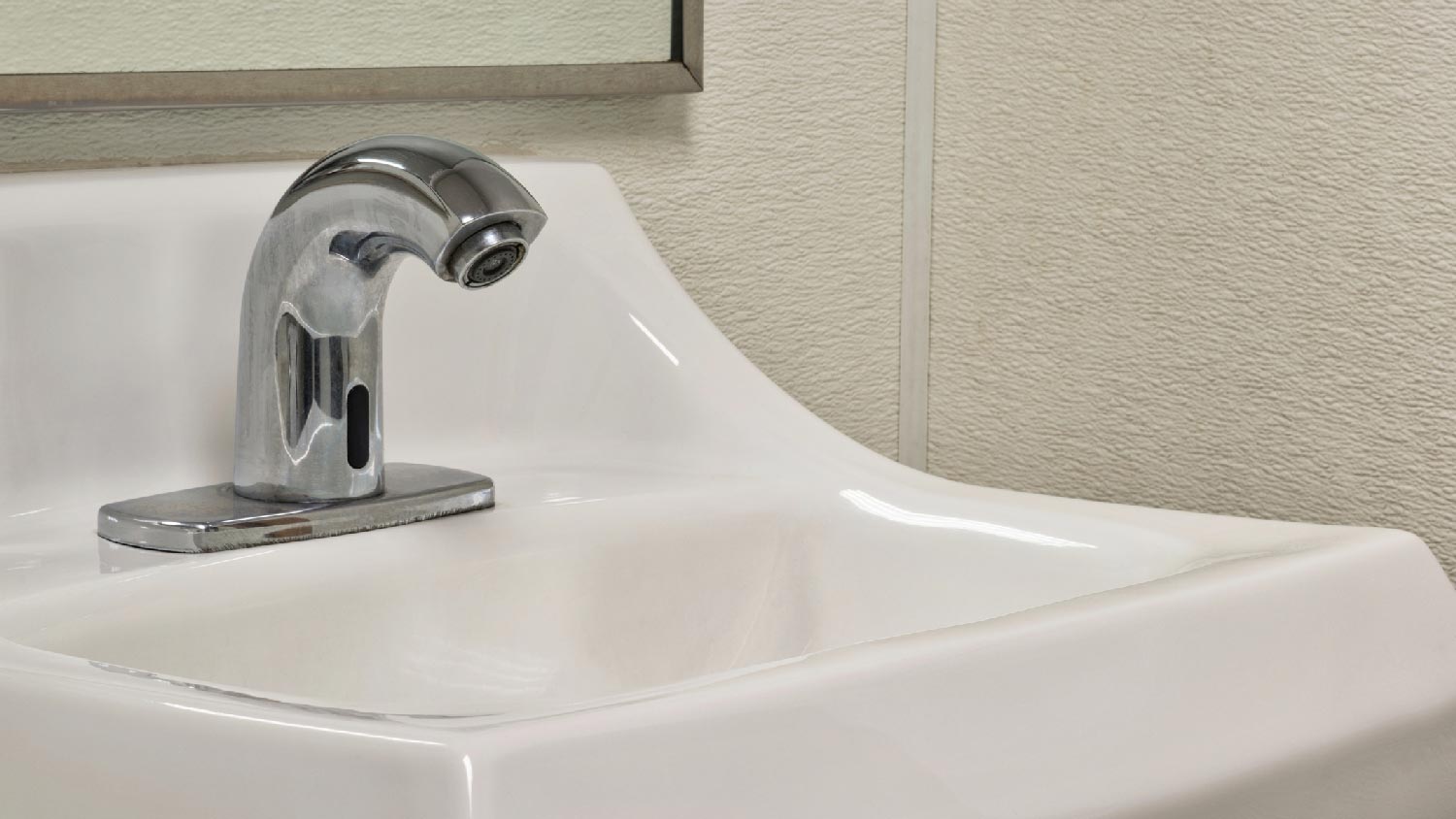
Making updates to your home? You may need to move your gas line to fuel new appliances or meet code regulations. We’ll cover the cost of moving a gas line, plus project tips.
You may have to touch the faucet to fix it


Touchless faucets add convenience and reduce the spread of germs.
Some problems include weak pressure, a faulty valve, or leaks.
You can fix some issues on your own, but others may require the help of a plumber.
Touchless faucets are a great way to reduce the spread of germs in your home and make doing dishes and washing hands more efficient. However, troubleshooting problems with touchless faucets can be frustrating. Because they have more parts than a traditional faucet, there are a few extra sensors and valves to check if you run into issues with water flow. These common issues are often easy to fix, but sometimes, you’ll need to contact a plumber for help.
If the water pressure is weak or there isn’t any water flowing from the faucet, you can first check the aerator—the small filter on the faucet’s spout—to see if it’s clogged. If the water flows from the faucet after you remove the aerator, clean out the clog by soaking the aerator in vinegar overnight, rinsing it, and screwing it back on.
You may also need to check that the water valves below the sink are on. Do this by turning them all the way to the open position and checking the pressure again.
The solenoid valve receives the signal from the spout sensor, allowing it to open and let the water flow through. If the solenoid valve is faulty, it won’t open when you activate the sensors. To fix this issue, you may need to replace the solenoid valve. Replacement solenoid valves cost between $30 and $100, depending on the brand and model, which can be much less than the cost of installing a new kitchen faucet.

Touchless faucets are activated when the infrared beam from the motion sensor detects the beams reflected from the hand or object placed in front of it. If the spout sensor isn’t working, it won’t detect the reflected beam and won’t activate the solenoid valve.
To determine if the motion sensor is the problem, see if the LED light is flashing. If not, check the batteries to ensure they were installed properly. If the light is flashing but there isn’t any water, the batteries may be dead, and you’ll need to change them.
There could also be a problem with the sensor wire that connects the sensor to the solenoid valve. A faucet repair pro near you can help determine if this is the case and repair it.
If the touchless faucet leaks, you can check a few faucet parts to ensure they’re functioning properly. First, check the aerator to see if it’s clogged and dripping water after the sink shuts off. If it is, you can clean it and soak it in vinegar overnight before replacing it. Sometimes, you can stop a touchless faucet from leaking by activating the sensor a few times in a row.
The faucet may be leaking for reasons besides the aerator, such as an issue with the solenoid valve. As with any faucet, there are a number of connection points that can allow water to seep through.
Check the valve seal—the seal at the base of the faucet—and the O-ring at the base of the faucet spout. You can also check the seal on the handles if they’re leaking. If you can’t fix the leak, call a plumber to check it out.
Installing a new touchless faucet ranges from $200 to $700, so in many cases, it’s more cost-effective to repair your existing faucet. The exception is if you’re already looking to replace yours. You may be interested in a smart kitchen faucet that responds to voice commands or a new type of bathroom faucet in a different finish or style. If this is the case, take this opportunity to get rid of the old faucet and invest in the cost of installing a bathroom faucet or kitchen faucet.
Another factor that can impact whether you want to replace your faucet is how much maintenance it needs. Some finishes, like brass, require regular polishing to prevent tarnishing, while others, like chrome or brushed nickel, just need a quick wipe down. Don’t forget to factor in the faucet's life span when deciding between a repair and a replacement as some last longer than others.
From average costs to expert advice, get all the answers you need to get your job done.

Making updates to your home? You may need to move your gas line to fuel new appliances or meet code regulations. We’ll cover the cost of moving a gas line, plus project tips.

Repairing a main water line is an urgent matter, so use this guide to get an idea of how much main water line repairs cost to act fast.

A main water shut-off valve controls water flow for your entire home. Here we break down the cost to replace a main water shut-off valve.

Discover grey water system cost details to learn about installation, maintenance, and ways to save on your home’s grey water system.

Weak water pressure, chipped hardware, and drainage problems are signs that it’s time to replace your bathroom plumbing.

Linear shower drains offer several stylistic options for your bathroom, but they can come at a cost. Keep reading to learn about linear shower drain pros and cons.